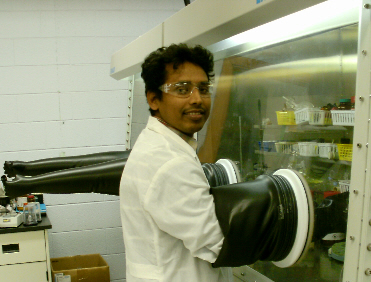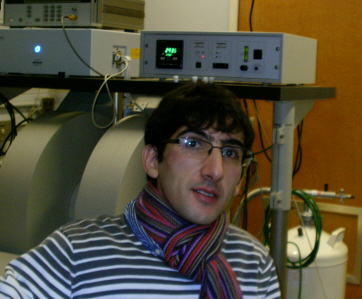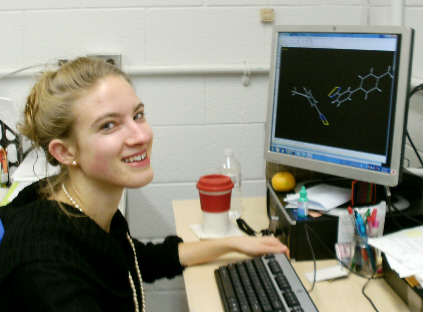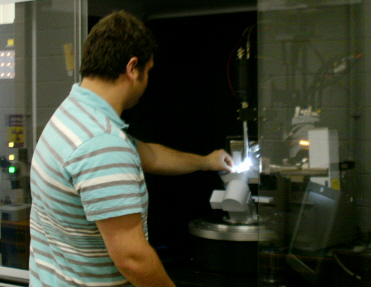The Rawson Group The University of Windsor
Synthetic Chemistry
Facilities
Spectroscopic and Analytical Methods
We have a dedicated MBraun glovebox for handling air-sensitive reagents and 8 fumeshoods, each equipped with a dedicated double manifold vacuum/nitrogen line. A range of dry solvents (THF, pentane, ether, toluene, DCM, MeCN) are available from solvent purification systems.
We have a Biotage Initiator microwave reactor capable of handling super-heated solvents supporting sample sizes up to 20 mLand supporting temperatures up to 300 'C and 30 bar pressure.
Sublimation is a regular purification/crystallisation technique in our group and we can accurately control temperatures in the range -20 'C to +250 'C and pressures down to 10-6 Torr using a high vacuum pump.
A Luchem light source is soon to be installed to undertake photolysis reactions under UV-A,, UV-B, UV-C or visible light irradiation.
Our research comprises an array of 'traditional' organic synthesis skills, 'conventional' Schlenk-line techniques for handling air-sensitive reagents as well as facilities for thin film preparation and characterisation. We focus on a 'hands-on' approach to chemistry with both undergraduate and graduate students accessing departmental and University facilities.
For preliminary characterisation we have our own Bruker alpha-ATR FT-IR spectrometer, an Agilent UV/vis spectrophotometer and an Optimelt automated melting point apparatus.
As free-radical chemists, EPR spectroscopy is an essential characterisation technique and we have our own Bruker EMXplus X-band (9 GHz) EPR spectrometer equipped with a nitrogen cryostream and heater providing access to temperatures between ca. -100 'C to + 120 'C. In addition we are currently installing a closed system He cryostat (which will permit access to temperatures down to ca. 6 K) and a fibre-optic light source for sample irradiation in situ. This instrument is capable of examining both solid and solution samples.
NMR Spectroscopy: We have access to Departmental multinuclear NMR facilities including 1H, 13C, 31P, 19F and 11B which can be run on the Bruker 500 MHz or 300 MHz NMR instruments.
Thermal Methods: We have access to both Mettler DSC and TGA-MS facilities maintained by Dr Eichhorn
Diffraction Techniques: The Department supports a Bruker D8 Vantage powder Cu-Ka X-ray diffractometer equipped with an Oxford Cryostream cooler offering temperatures from ca. -150 'C to + 120 'C.
In addition the Department has recently installed a state-of-the-art Bruker Discover dual source single crystal diffractometer providing both Cu-Ka and Mo-Ka radiation coupled with a large photon area detector and an Oxford cryostream cooler for low temperature and variable temperature studies.
Computational Studies: We have versions of Jaguar running through a dedicated work station for ab initio, DFT and TD-DFT calculations.
Thin Films, Surfaces and Nanoparticles
We have a dedicated MBraun glovebox for the preparation of thin films which incorporates a spray facility and a Laurell spin-coater.
Surface characterisation methods include access to the state-of-the-art atomic force microscopy (AFM) and Raman spectroscopy facilities, housed in the UW GLIER centre.
Jahirul manipulating his sample in the glovebox
Yassine monopolises the EPR spectrometer for the day to undertake detailed VT studies
Natalia undertakes theoretical calculations using Jaguar to probe how electrons on different molecules interact through space.
Justin mounts a crystal on the new Bruker dual-source X-ray diffractometer





